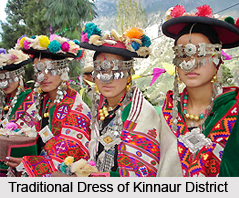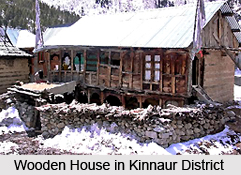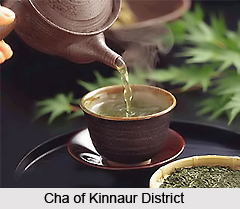 Culture of Kinnaur District exhibits a great heterogeneity in the state of Himachal Pradesh. Different communities dwelling in the district follow different lifestyles. The society is divided into various groups and people belonging to these groups have adopted different occupations. Peculiar food habits prevail in the district which suits the geography and climate of the region. A number of local dialects are also prevalent in the district. Numerous rituals, beliefs and practices of Kinnaur District echo the ancient heritage of the country. These diverse practices make the culture of the district highly vibrant and colourful.
Culture of Kinnaur District exhibits a great heterogeneity in the state of Himachal Pradesh. Different communities dwelling in the district follow different lifestyles. The society is divided into various groups and people belonging to these groups have adopted different occupations. Peculiar food habits prevail in the district which suits the geography and climate of the region. A number of local dialects are also prevalent in the district. Numerous rituals, beliefs and practices of Kinnaur District echo the ancient heritage of the country. These diverse practices make the culture of the district highly vibrant and colourful.
People of Kinnaur District
Kinnaur District has a heterogeneous population. Prominent diversity can be witnessed and people belonging to various ethnicities dwell in the district. Three territorial units have been assigned to categorize the people of the district. People belonging to lower Kinnaur are of Mediterranean physical type. The majority of people are Hindus however; influence of Buddhism is also evident. People of middle Kinnaur are of mixed races having Mediterranean as well as Mongoloid features. Both Buddhism and Hinduism are prevalent among the people. People of upper Kinnaur have mostly Mongoloid features with a few exceptions. People of the district are mostly artisans or peasants. The cultivating community are known as Kanets who are further categorized into various sub castes. The scheduled castes of the district are referred as Domangs and Chamangs who are professionally blacksmiths and weavers respectively. Ores is another caste which is mainly involved in carpentry. People of different localities of the district worship different local deities.
 Dresses of Kinnaur District
Dresses of Kinnaur District
Woollen clothes are prevalent in Kinnaur District which suits to the climate of the district. Head dress is very common among both men and women which comprise of a round woollen cap, locally known as thepang. Chamn Kurti is the male woollen shirts and Chhuba is woollen coat. Sometimes sleeveless woollen jacket is also worn in over Chhuba. Among women, dohru is common, which is a woollen shawl. These shawls generally have dark hues. Choli refers to full sleeves blouse for women having decorative linings. Traditional foot ware is made up of goat hair or wool with a goat hide sole.
Food of Kinnaur District
People of Kinnaur district consume phafra, wheat, ogla and barley are staple food. Rice is also a common diet. Cha is referred to the salted tea which is taken in the mornings. It is taken along with sattu prepared of parched barley flour. Both vegetarians as well as non vegetarians constitute the population of Kinnaur District. During festivals, consumption of alcohols is also common.
 Language of Kinnaur District
Language of Kinnaur District
A number of dialects are followed in Kinnaur District, which are collectively known as `Kanauri`. The people belonging to the villages situated in Tibetan Border speak Tibetian dialects. In Lippa, Asrang and Jangi regions Jangram dialect is spoken whereas Shumceho dialect is spoken in Labrang, Kanam, Shyaso, Spilo, Rushkalang villages. Schedule castes speak languages prevalent in the adjoining districts. Besides these, English and Hindi languages are also commonly spoken in the district.
Houses of Kinnaur District
The pattern of housing varies from region to region starting from lower to upper Kinnaur. The houses of lower Kinnaur are generally two storied with wooden or stone structure. The roofs are either slated or flat. Upper Kinnaur region has mostly stone houses with flat roofs and are often two storied. The scarcity of wood in this region had led to the poor construction of houses. Separate wooden structures for the storage of grains, also known as `Kathar`, are present in most of the houses. For the purpose of sitting, Khayarchais used in the houses which are mats made of goat hair. Utensils used in the district are made of bronze, aluminium or brass. However with changing time, stainless steel utensils and china crockery are also being used.



















